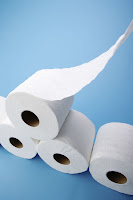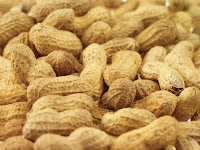 One way the 90 calorie bars have reduced the number of calories in each bar is by reducing the size of the bar. It's hard to compare costs when the sizes of the items are no longer the same.
One way the 90 calorie bars have reduced the number of calories in each bar is by reducing the size of the bar. It's hard to compare costs when the sizes of the items are no longer the same.In Excel Math, students learn to add and subtract, use coins and dollars, compare costs, multiply and divide, and solve word problems involving money. Even the most proficient mathematicians might be scratching their heads over the changing size of packaging and food items in our stores today.
Toilet paper rolls have reduced their number of sheets per roll or the size of the square sheets to decrease the total feet of paper while keeping the price the same. So when comparing prices, I now have to decide if I want one or two-ply, larger sheets per roll, more sheets per roll, or a larger total on the roll. Then I need to find out if the larger rolls will even turn on my dispenser at home. Could it get more confusing?
 Here are some soaps I bought for our visiting guests this summer. (Yes, I over did it!) The soap came in various packages of 6 or 8 bars, but even the individual soap boxes were completely different sizes and so were the soaps. You really have to do the math to find out which one is the better price when the sizes vary so much.
Here are some soaps I bought for our visiting guests this summer. (Yes, I over did it!) The soap came in various packages of 6 or 8 bars, but even the individual soap boxes were completely different sizes and so were the soaps. You really have to do the math to find out which one is the better price when the sizes vary so much.We'll say that six 3.9 ounce bars of soap cost $5.00. The package lists the total or net weight at 23.28 ounces or 1.45 pounds (which means the actual bar size is closer to 3.88 ounces). Instead, we could buy a single bar of soap at 4.25 ounces for $1.19 per bar. Which would be most cost effective? Let's do the math! The package of six bars of soap cost 23¢ per ounce ($5.00 ÷ 23.28 = .23). The single bar of soap costs 28¢ per ounce ($1.19 ÷ 4.25 = .28). So in this case we could save 5¢ per ounce or $1.16 on every six bars of soap. (Your students can do this type of problem-solving experiment to find cost per unit of some of their favorite items: snack food, fruit, facial tissue, desserts, movie tickets, etc.)
 Cereal and cracker boxes also contain less food than they used to in years past. There are fewer nuts in each can or bag. Making unit cost comparisons is no longer as easy as looking a the price of the item. Read more about the shrinking sizes of grocery items at WallStreetJournal.com.
Cereal and cracker boxes also contain less food than they used to in years past. There are fewer nuts in each can or bag. Making unit cost comparisons is no longer as easy as looking a the price of the item. Read more about the shrinking sizes of grocery items at WallStreetJournal.com.
Ask your students to take a look at their favorite foods to see how the package size has been reduced over the years. You could even take a class survey and make a picture chart of the packaged foods that are favorites in your classroom.

You might also like these articles:
New to Excel Math? Preview elementary math lessons that really work for Kindergarten through Sixth Grade on our website: www.excelmath.com. Also find math resources for teachers, parents and students and download a sample packet at excelmath.com.
The unique spiraling system built into Excel Math lessons helps children become confident math students. Read more and see sample lessons at http://excelmath.com/downloads/sample_lessons.html.
What are some of your favorite shrinking packages? Share your thoughts by clicking on the word "comments" below.
Read more . . .
Read more . . .

You might also like these articles:
The unique spiraling system built into Excel Math lessons helps children become confident math students. Read more and see sample lessons at http://excelmath.com/downloads/sample_lessons.html.


No comments:
Post a Comment
Type your comment here